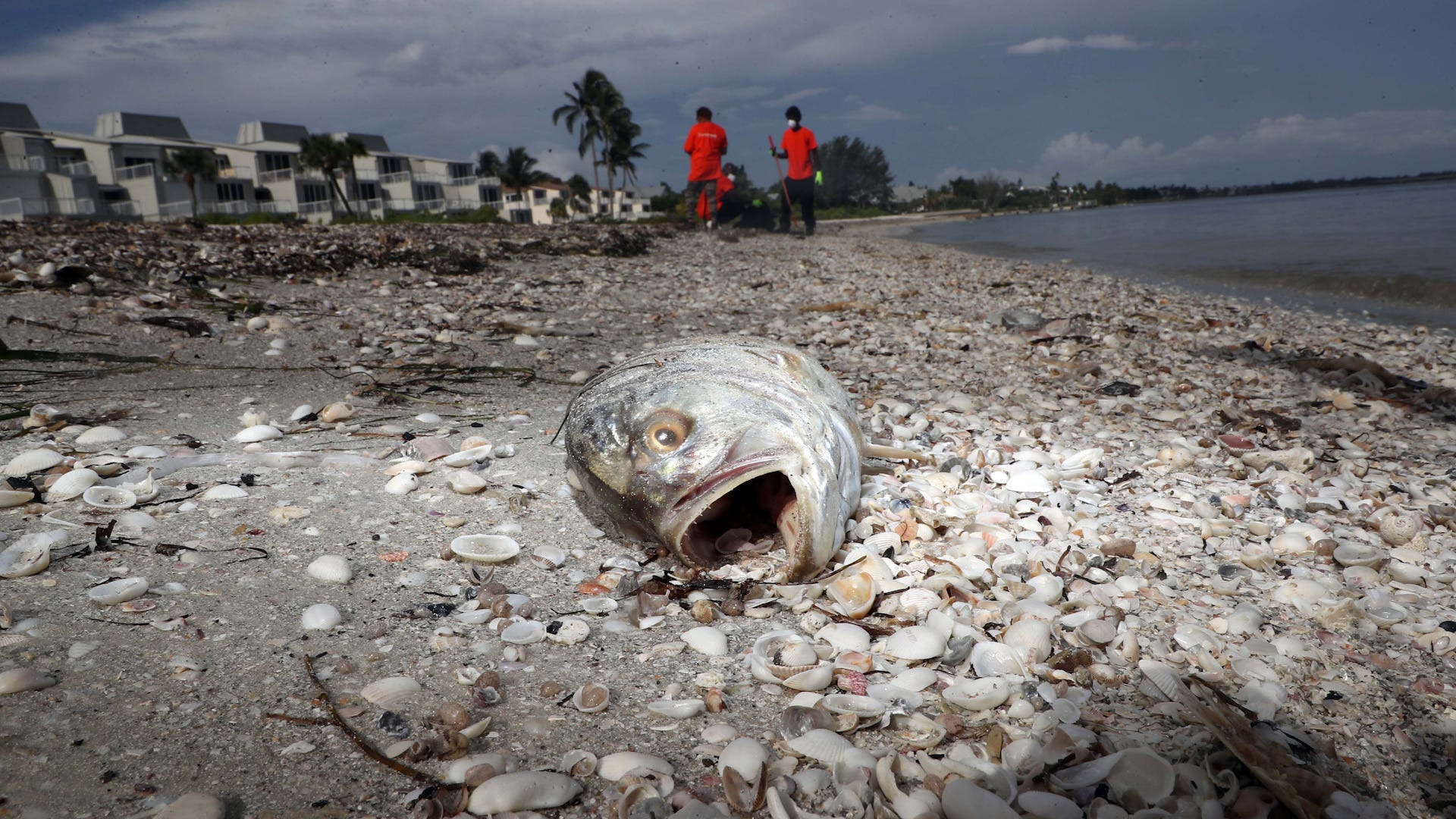

brevis in the prolific red tide, counting over one million cells (individual algae) per liter of water. Water samples have shown extremely high concentrations of K. Originally starting in the Gulf of Mexico, where there is substantial nutrient loading of uncontrolled runoff from land-based agricultural operations, the red tide has since wrapped around the tip of Florida, and is impacting Florida’s Atlantic coast including Palm Beach County. If a substantial amount of DO is removed, that area of the ocean may be unable to support marine life, creating something known as a dead zone, causing additional fish kills and loss of potentially important habitat. Additionally, large swaths of the phytoplankton in red tides and other algae blooms eventually die and sink to the bottom, where decomposition by bacteria reduces the dissolved oxygen (DO) content of the surrounding marine environment. brevis), that makes up red tides off the coast of Florida, can release harmful brevetoxins into the ocean and air, causing massive kills of fish, marine mammals, and sea turtles and painful burning of the eyes and lungs for nearby beach goers.

Certain types of phytoplankton, like the dinoflagellate Karenia brevis (K. Unfortunately, some phytoplankton are extremely harmful and toxic to humans and marine wildlife when they reach high concentrations. They absorb nutrients and carbon dioxide from the water and produce oxygen through photosynthesis. Phytoplankton are believed to generate as much as 80% of the world's oxygen supply. Most species of algae, or phytoplankton, are not harmful, and serve as essential energy producers at the base of the food web, without which higher life on this planet would not exist.


 0 kommentar(er)
0 kommentar(er)
